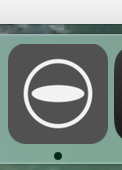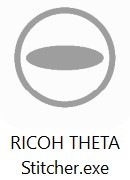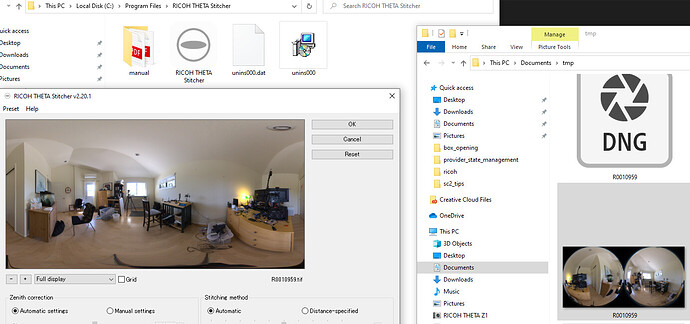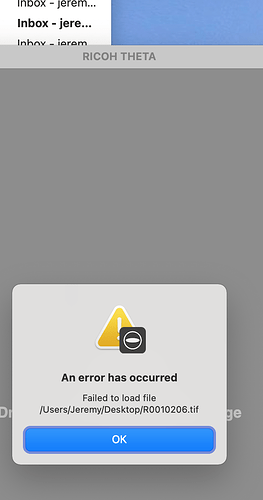I own a Theta Z1 and want to produce equirectangular photos for virtual tours, WITHOUT LrC. Can anyone recommend a good workflow? I use On1 Raw software for editing photos and prefer to stay with that. And I’m not happy with Adobe’s monthly charges. Thanks for any pointers on this subject.
Read through to the end of the thread below. It may meet your requirements without having to pay extra money for software.
Is On 1 Raw able to convert the Z1 raw files into. tif for stitching? I seem to remember trying that software a couple months ago and it wasn’t able to read the 360 raw file. As the other reply suggests, there is a way to use the Theta Stitcher app as a standalone without Lightroom but it’s useless if you can’t first convert your files to. tif. Please correct me if I’m wrong about On 1 Raw.
I am traveling But plan to try your suggestions as soon as I get home. Thank you for making them. I just don’t want to give in and get Lightroom classic again.
Hi, I don’t know about ON1 Raw and I am actually not that experienced with the DNG editing process.
I think the original poster is trying to get by without Lightroom in any reasonable way.
I think he can use something like the free darktable to export the DNG to another format.
I was thinking that he could try and use the standalone stitcher instead of PTGui (which is good, but may be expensive) in the workflow. The three free pieces of software he would need are:
I’m not sure if the above will work as I have not actually tried it myself.
I don’t use Darktable or GIMP either but I assume they should work. My workflow is as follows:
- Exposure X6 for exposure, colour correction and tif conversion
- Theta Stitcher in standalone mode
- Affinity Photo for more advanced editing like inpainting and cloning, nadir logo and export to jpg
- Topaz Sharpen AI or Topaz Gigapixel AI if needed
@mcworen Thanks for this workflow. It’s great to see what the professionals are using. Sadly, I’m not much of a photographer and more of a basic tester of the camera fundamental technology and functions. Though, I would like to improve my photography over time. 
So, just to recap your experience, the Exposure X6 does work for editing and Tif conversion, but the ON1 Photo RAW does not?
I think that some people don’t like the philosophy of the Lightroom CC subscription model and want an option for a one-time payment.
As far as I can tell, open source software like darktable is not popular for use with the THETA Z1 images. Also, I don’t think it’s popular to edit on Linux, when was my original test.
Your workflow and tools is much more realistic. Thanks.
Actually I tested On1 yesterday and it works with Theta Z1 raw files for editing and tif conversion.
My preference is Exposure X6 because the UI is more similar to Lightroom, it organizes and batch edits without using a separate library, and it has AMAZING chromatic aberration and defringing tools which the Theta Z1 really needs.
That last one is the most important, and I found On1’s chromatic/defringing to be inadequate for the Z1.
Thanks for testing these professional tools. This is really the information that people need.
I usually do basic technology testing for people building apps and want to see if some type of specification or feature works.
Toward this end, I just tested the free darktable software with the RICOH THETA Stitcher 2.20.1 standalone and can confirm it works.
process to get it working. Edit the file at the location below. Substitute your username on your Windows machine.
C:\Users\YOURUSERNAME\AppData\Roaming\RICOH\RICOH THETA Stitcher\RICOH THETA Stitcher.ini
I added these lines:
[debug]
ENABLE_LAUNCH_EXC_LR=1
The RICOH THETA Stitcher program itself is in:
C:\Program Files\RICOH THETA Stitcher
Once you have it set up, then use these steps:
- take DNG shot with Z1 (must be set up in mobile app)
- transfer DNG file to local computer. I used a USB cable and drag and drop it from the camera to a folder
- import DNG file into some type of raw developer. For quick testing, darktable is free and open source. it it not popular for production use.
- export in a usable format. I used TIFF. I think that JPG also works
- drag the exported TIFF or JPG file onto the icon for the stitcher. It is in C:\Program Files\RICOH THETA Stitcher
Sample DNG images for testing are available here.
First off, I want to thank everyone who has chimed in on this subject. I very much appreciate the outpouring of support. So I am using ON1 editing software, on an iMac. Attempts to stitch my tiff files Z(from ON1) result in really bad attempts by PT Gui. So stitching and morphing the stitched files is my challenge. It’s easy with my X2 camera. Dropping edited files onto the Theta+ app isn’t the solution. I will keep trying!
Theta Stitcher and Theta app are separate applications, and Theta Stitcher is way faster than PTGui.
The trick to stitching with Theta Stitcher is to stick with basic adjustments like exposure, contrast, highlights, shadows that affect the image as a whole before you export to tif. Then after stitching, finish your edits. Also, turn off ‘Camera Visibility Reduction’. It’ll just wreck your stitching.
There are Mac instructions to convert Theta Stitcher to standalone mode, but of course stick to what you prefer and are comfortable with.
Skip to 0:54
First I think it’s wonderful how you’re willing to help out other people by sharing your hard-earned knowledge and expertise. It’s a nice warm feeling about the world during this time of shelter-in-place when exposure to different people is limited. Thanks.
I didn’t know about the need to turn off “Camera Visibility Reduction.” Also, when you export to tif, do you export as 16 bit tif? 8bit tif? Does it make a difference?
In my last test, I couldn’t get a stitch with 32 bit (floating point) tif files.
As I haven’t used DNG in a while, I think I’ll try the Dual-Fisheye Plug-in stacked DNG next.
Happy to help!
“Camera Visibility Reduction” basically works by overlapping the stitching near the tripod. It isn’t very localized and can affect the rest of your stitching. I prefer removing the tripod myself.
Most places that accept 360 images, like virtual tour apps, Google Street View and Facebook need jpg files which are strictly 8bit. Converting dng to 16bit tif files is more than enough during editing to give you long sliders to work with in your chosen editing software before converting again to 8bit jpg for sharing.
Dual Fisheye Plugin is amazing and I use it all the time to take interior brackets to send to Aurora HDR for processing. It’s in-camera HDR processing is extremely good but I find it doesn’t deal with movement in a scene as well as Aurora and I like to control every step of my image processing.
I imported a Theta DNG file into ON1, made my adjustments, exported it as a TIFF and then tried to stitch it in the Ricoh Theta program 
I then get this message:
The original file is here: Dropbox - R0010206.DNG - Simplify your life
To recap, I’m interested in learning how to take an edited TIFF file from my Theta Z and stitch it and then morph it.
Like I said in my last post, you’re using the wrong app. The Ricoh Theta app is a viewer and software management application.
You need the Ricoh Theta Stitcher:
https://support.theta360.com/intl/download/lrstitch/macosx
Icon will look like this:

It is meant as a plugin for Photoshop and Lightroom and not standalone application but there are simple instructions here to make it work as a standalone app:
https://youtu.be/wp9-gHs4LzM - Skip to 00:54 for Mac.
After that’s done, simply drag a tif file onto the app icon and the stitching window will open.
Here’s your stitched photo:
https://www.amazon.ca/photos/share/axVTwQrYCuFSBTKBMujoqCMUvt7asn93dwm19zp6cV4
![]()
I downloaded the stitcher and then tried to find the plist, as referenced in other posts and the youtube video. If it exists on my computer, it is well hidden. I spent 15 minutes trying to find the file. Any suggestions? I like the idea of using the Theta stitcher as a stand alone without LRC. It is proving to be a challenge. IOW, following the string
gets me nowhere.I am unable to find the RicohthetaStitcher.plist on my iMac. I spent almost a half hour looking for it. Nothing. Any other clues? I have downloaded the Stitcher successfully, in that it launches but says that I need LRC. So I feel like I’m on the right track . . . .but not close enough.
I’m on PC but I gather it’s here:
Macintosh HD/yourusername/Library/Application Support/RICOH THETA/RicohthetaStitcher.plist
I’m also curious what you mean by ‘morph’? Once the photo is stitched, all you need to do is load it into the regular Ricoh Theta app and it will display as a spherical panorama. Try it with the photo I stitched for you.
If the Library folder isn’t visible (it’s a hidden system folder) simply use the unhide shortcut combo:
Shift + Command + Period character
That will display the folder so you can navigate to the file.
I am making slow but steady progress, thanks to your help. I edited the plist file to this:
When I launch the Theta Stitcher, two things happen. I get an Adobe warning and if I respond to either button, the stitcher dissappears: And if I drag either a TIFF or JPG file on top of the stitcher, neither will load. I am not giving up! Anything to avoid LRC.




